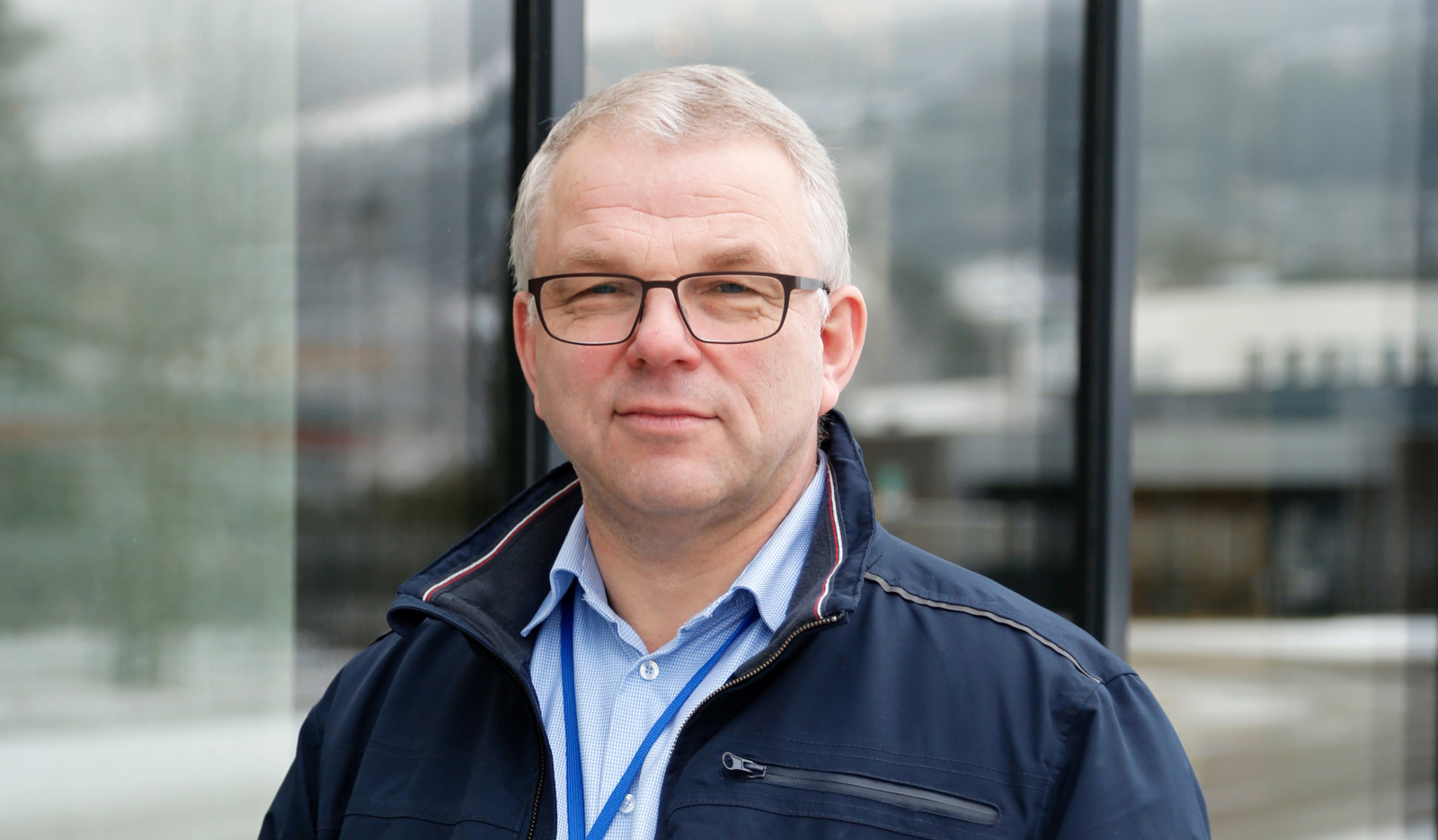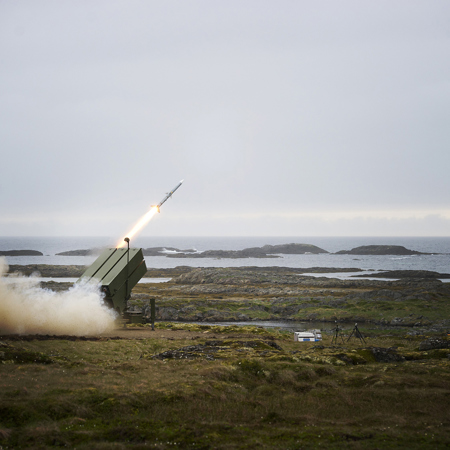
What’s the next move for KONGSBERG regarding technology? This is the main question concerning the team that Arne Rinnan has been appointed to manage.
-
Text:OVE RONNY HARALDSEN
Photo:OVE RONNY HARALDSEN
-
Ove Ronny HaraldsenGroup Communication Manager
In the autumn of 2016, there was some re-organisation within KONGSBERG, which meant that responsibility for coordinating innovation was moved from group level to the KONGSBERG Technology Forum. The Technology Forum is made up by technical managers across the entire group. The team will review potential partners as well as the status and needs of KONGSBERG and then put forward recommendations for what the group should prioritise.
Head of the Technology Forum, Arne Rinnan, is Chief Technology Officer and R&D Manager at Kongsberg Seatex in Trondheim. Going forward, he will be spending about 20 per cent of his time on issues related to the Technology Forum.
“As head of the Technology Forum, what do you see as your most important task going forward?”
“I believe that it is very important to realise the potential value from all the technology that KONGSBERG currently possesses. We have still not fully capitalised on all the technology within the company. Promoting and highlighting the importance of the value of this technology will be very important.
The technology capital in KONGSBERG gives us an enormous potential for innovation. Innovation is not something that materialises out of thin air, but is based on this capital. At the same time, this platform must undergo continual development so that it remains sustainable in the future.”



“What kind of mandate does the KONGSBERG Technology Forum have?”
“It’s our responsibility to explain KONGSBERG’s opinions and intentions when it comes to technology. Internally, we’re going to be working on technological strategies and business development and will act as an advisory body to corporate management. We’ll play an active role with our strategic partners, such as NTNU (Norwegian university of science and technology), SINTEF (foundation for scientific and industrial research) and FFI (Norwegian Defence Research Establishment). We will actively cooperate with innovation agencies such as Forskningsrådet (Research Council of Norway), the EU and other important authorities.
Internally, we will be knowledgeable about the technology that KONGSBERG possesses, be clear about what we should be good at, and we will identify areas where we need to develop. One such example is digitalisation, where we are doing a lot to improve on the technology side of things.”
“Which technology areas will KONGSBERG focus on in the future?”
“We have prioritised a few areas, one of which is autonomy. KONGSBERG already scores high on autonomy; take, for example, dynamic positioning as an autonomous function that keeps vessels in position without the use of anchors. We have the NSM (Naval Strike Missile) and JSM (Joint Strike Missile) missiles that fly autonomously, and we have subsea vessels such as HUGIN, REMUS and MUNIN. Our competence level is very high, but we must continue to lead the development within this area. Much of the development within the area of autonomy concerns understanding the surroundings and responding in a safe and predictable manner. This is where we need to focus on development.”
“Another focus area for KONGSBERG going forward is Ocean Space, which, to a large extent, involves sustainable utilisation of marine resources. Why will Ocean Space be so important for KONGSBERG going forward?”
“There are many domestic and international strategies that are focused on Ocean Space, and the topic has gained a lot of attention. KONGSBERG is an Ocean Space company, so this fits our business very well. Regarding traditional transport and everything else that concerns operations within Ocean Space, we are already there.
Within the traditional areas, we need to defend our positions and make them even stronger. But then new opportunities arise—ones in which we have an ongoing focus in order to realise our share of the value chain—such as offshore wind. The same applies to aquaculture, where we are strategically taking care of future opportunities that we expect to follow.”
"We have still not fully capitalised on all the technology within KONGSBERG."
“How do you imagine KONGSBERG’s portfolio of products will look, say, 15 years from now?”
“We’ll see a certain degree of continuation of what we currently have. Many of our products are at an early stage and will be relevant for many decades to come, particularly with regard to defence. We will stay strong in areas where we are already strong, but there will be something additional based on smart data, autonomy and artificial intelligence. We’re going to see smart ships where the crew have different roles and tasks to what they currently have, and KONGSBERG will be the company that supplied the solutions that make this possible. We are going to be even more service-oriented, and the service that KONGSBERG provides is going to change significantly.”
“What is your view of disruptive innovation, i.e. innovations that turn markets and problem-solving upside down?”
“It’s really important to ensure that there is a balance between day-to-day innovation and disruptive innovation. The big game changers don’t come about so often. You need to be prepared and to understand when they are on their way, and what you need to do to claim positions. But you also need to have ongoing innovation and to make improvements related to the business as a whole. It’s easy to talk about innovation in technology environments, but it’s important to look at production and logistics in our own organisation. Innovation within these areas is about creating a modern, cost-effective operation, and it is a prerequisite for creating profitability that can be channelled back into technology development. We are marketing ourselves as a digital company, and in order to maintain our credibility within the market, it is important that we can demonstrate that our internal systems are digitalised.”
“Which KONGSBERG innovation are you personally most proud of?”
“Personally, and given my background with Kongsberg Seatex, it would have to be the control systems for seismic streamers and also the development of the eBird. This project involved putting small control systems into the kilometre-long streamers that seismic vessels tow behind them as they shoot seismic waves towards the seabed. We took on an extremely difficult challenge that was almost impossible to solve. Almost! I’m very proud of the fact that, even in the face of strong competition from established players, we successfully converted this product into a good business and a great solution”, Arne Rinnan concludes.


